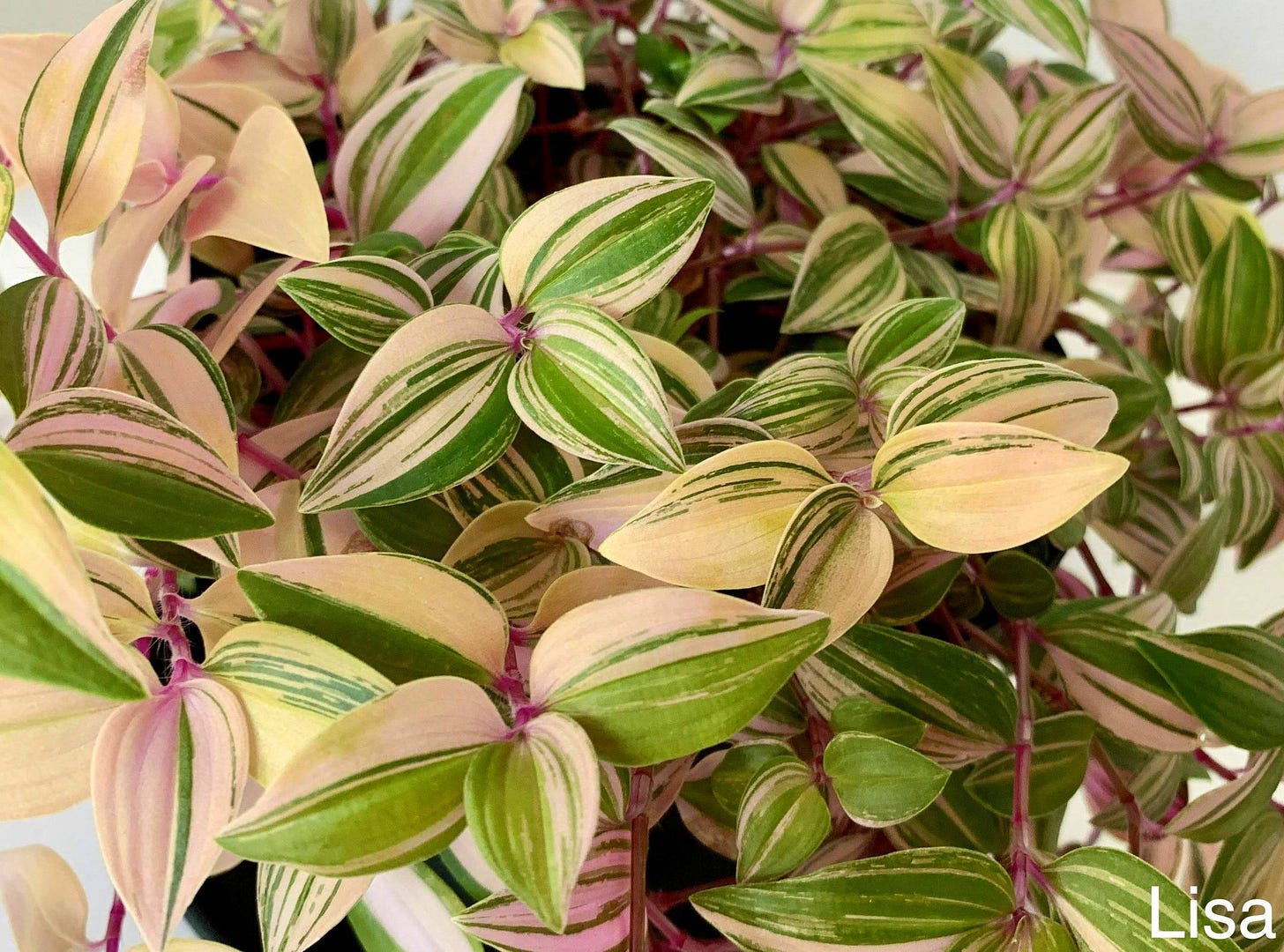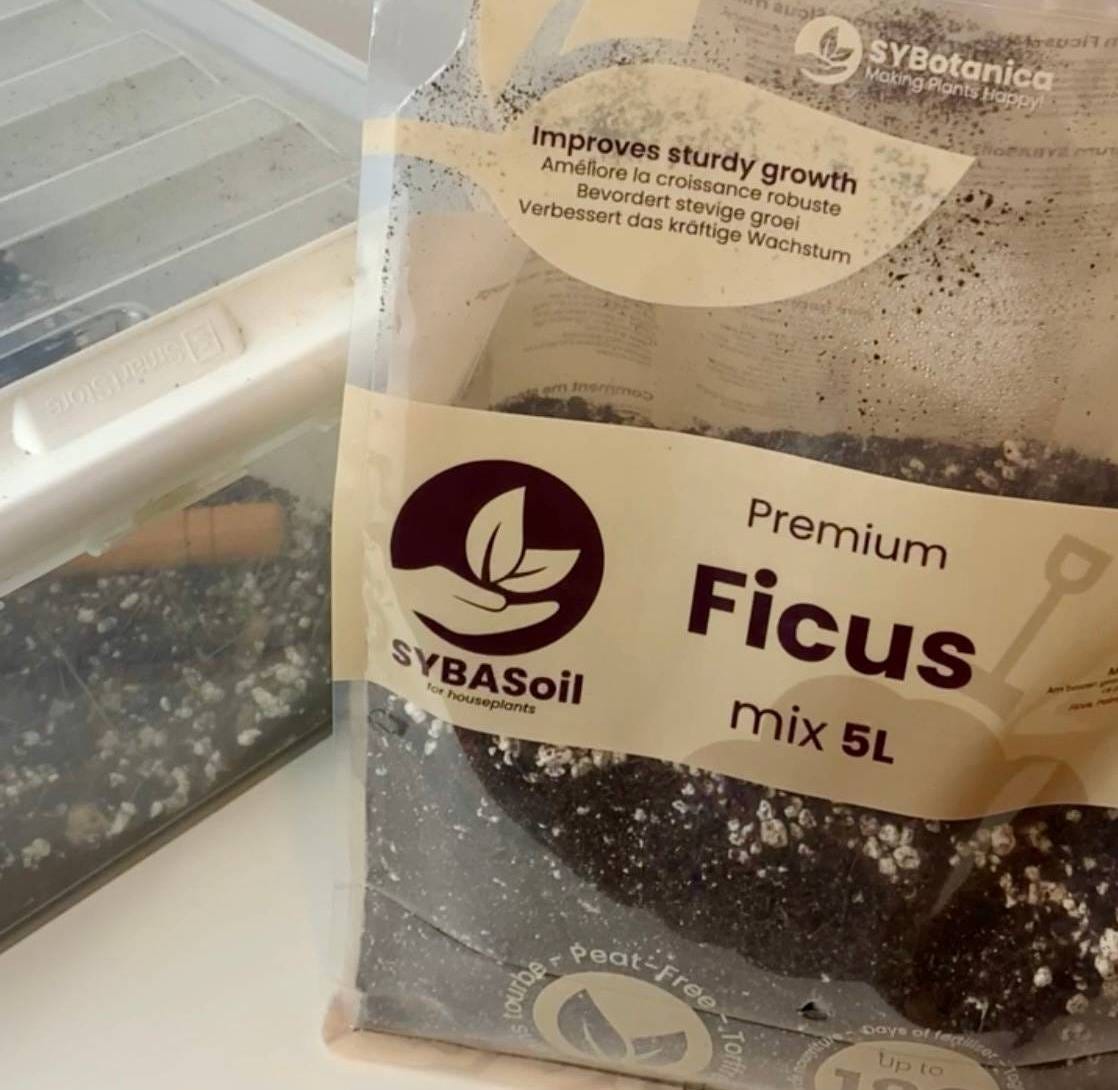The Perfect Soil Mix for Your Tradescantia
Disclaimer: This post contains affiliate links, which means I earn a small commission if you make a purchase using my links or my code, at no extra cost to you. Your support helps me keep sharing Tradescantia tips and content—thank you!
I often get the question of what soil mix do I use. The simple answer is Whatever I have at home! But there is of course a bit more to it when it comes to choosing soil for you plant.
Importance of the Right Soil
Tradescantias aren’t too picky when it comes to soil. What you decide to use depends on how much you water and fertilize. They do really well in any good quality soil mix for indoor plants. But they do like their soil to be a bit more airy, so mixing in Perlite, Pumice stone, Orchid bark or something like that to make the soil more airy will definitely be beneficial.
What’s most important is to adjust the watering according to the soil you have. But let’s get over the options!
Options for your Soil Mix
Good quality soil for indoor plants:
This is a great base for your mix, or you can just use this. The key is to chose one made specifically for indoor plants which often has a lighter texture and can sometimes have added sand or perlite to increase drainage.
To increase drainage:
Perlite: is a lightweight, volcanic glass that is great to have in soil mixes for its ability to improve aeration and drainage. When added to soil, perlite prevents compaction, allowing air to circulate and water to drain efficiently.
Vermiculite: is a natural mineral that expands when heated. It retains moisture and nutrients, which it then slowly releases to the plant roots as needed. Vermiculite also helps to aerate the soil, preventing compaction and promoting healthy root growth.
Pumice: is a type of volcanic rock that is highly porous and lightweight. It helps to prevent soil compaction, allowing for better air circulation around the roots. Pumice also holds onto moisture, releasing it slowly to the roots, which helps maintain consistent soil moisture levels without waterlogging. Its durability means it won’t break down over time, ensuring that your soil maintains its structure and drainage capabilities long-term.
Orchid bark: is a coarse, organic material from fir or pine trees. It improves drainage and air circulation in the soil. It helps prevent soil compaction, allowing roots to breathe and grow freely.
Other options:
Coco coir: is a natural fiber extracted from the outer husk of coconuts, is a great addition to your soil mix. It improves soil drainage and aeration, helping to prevent waterlogging, which is important for these plants. Coco coir also retains moisture effectively, making sure that the roots stay hydrated without becoming waterlogged.
Worm castings: also known as worm compost or vermicompost, are an all-natural soil amendment produced by earthworms. It’s beneficial since it gives the soil essential nutrients and improve its structure. It helps suppressing soil-borne diseases due to it’s antibacterial and antifungal properties.
Activated carbon: is a type of charcoal that is processed at high temperatures to create a highly porous structure. When added to soil mixes, it helps improve aeration and drainage while also filtering out impurities like toxins, heavy metals, and mold. Its ability to absorb excess moisture can help prevent root rot, making it a great addition to plant care.
Which mix should you use?:
While I’ve mentioned a few options like coco coir, perlite, and activated carbon, remember, you don’t need to use all of them at once. It’s all about picking what works for your plants and what you have around. Tradescantias are pretty flexible, they’re happy in any good quality soil.
Here’s my go-to soil mix: I use a third houseplant soil, a third coco coir, and a third pumice. This combo keeps the soil light and airy, just perfect for keeping those roots happy. I also toss in a little activated carbon and occasionally water with liquid vermicompost for that extra nutrient kick.
If you don’t want to mix your own soil
Mixing your own soil can be fun, but let’s be honest, not everyone has the time (or wants to deal with the mess!). Luckily, there are some great ready-made options, and one of my favorites is SYBotanica’s Ficus Mix.
It has everything Tradescantias need, perlite and sand for good drainage, worm castings for nutrients, and activated carbon to help keep the soil fresh by filtering out any harmful chemicals or mold. I’ve been using it for a while now, and my Tradescantias are loving it!
So, if you’re looking for a high-quality soil mix, I definitely recommend checking it out. Plus, SYBotanica has a great selection of other soil mixes and plant products too!
💜 Use code KATJA10 for 10% off your entire order!
I hope you found this helpful and if you have any questions, please don’t hesitate to reach out!
And if you haven’t already, don’t forget to SUBSCRIBE to get all the tips and tricks you need to keep your Tradescantias happy!
Until next time! Happy planting!
Katja



